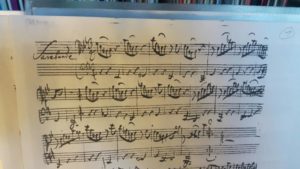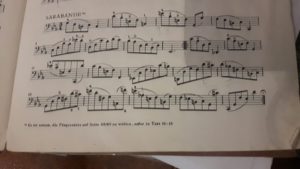The importance/dangers of Urtext editions
At the moment, I am reworking three of the Bach suites. This inevitably involves continuing detective work, trying to piece together Bach’s intentions from the sources we have. As all cellists know, the original manuscript(s) is (are) missing, which means that we have to rely on two copies made within Bach’s lifetime: one by his singer-wife Anna Magdalena, the other by a student, Johann Peter Kellner – and on a host of later editions of wildly varying quality. Working from a reliable edition of the suites is essential for understanding the musical content; learning them from a version distorted by the editor’s personal views can be like trying to read a novel riddled with misprints – or a translation of a novel in which the translator has mistranslated many of the most important words.
The articulations in the suites – which profoundly affect the connections between notes, as well as the bowings – is almost as important as the notes themselves. For instance – how can the music sound dancelike if too many notes are played under the same slur, so that beats are missed? And not only does the music fail to dance if the articulation is inappropriate – it also cannot talk; and talking, discussing, questioning is, I feel, a key component of these pieces. The articulation must underline (not undermine) the metric stresses, the harmonic sense, the essential spirit of the music.
The reason for today’s rant is that I have recently looked at a few so-called ‘urtext’ editions of the 5th suite, and in particular the Sarabande. The 5th suite is slightly different from the others in terms of sources, because for this one suite, we DO have a manuscript in Bach’s hand – albeit of his arrangement of it for lute. It’s very different writing from his cello-writing (yet another facet of Bach’s limitless genius was his deep understanding of every instrument for which he wrote – nobody has ever exploited the possibilities of the cello better than he did); but it’s still valuable. There is not much articulation throughout the suite – less than in the cello sources; but it’s interesting to see what there is. The slurs in the Sarabande are notably similar to those in the Anna Magdalena manuscript (for some mysterious reason, this Sarabande is missing from the Kellner version), after allowing for the difference between the writing for cello and lute. One striking feature is the lack of slurs covering 4 notes – also a feature of Bach’s manuscripts of his solo violin works.
It COULD be that a slur over 3 notes of a 4-note group is merely a shorthand for a 4-note slur, and that is how most editors seem to regard it. But why? There are occasions when both Bach and Anna Magdalena do seem to indicate a slur over 4 notes (bar 5 in this Sarabande, for instance, in the Anna Magdalena – the lute version is different, in that the bass notes are never slurred to the higher ones, so it doesn’t apply); so why should editors assume that in other places the Bachs are repeatedly being careless? The 3-and-1 articulation indicated in the manuscripts so often makes perfect musical sense; and it seems to me that it allows the music to talk more vitally than constant 4-note slurs.


